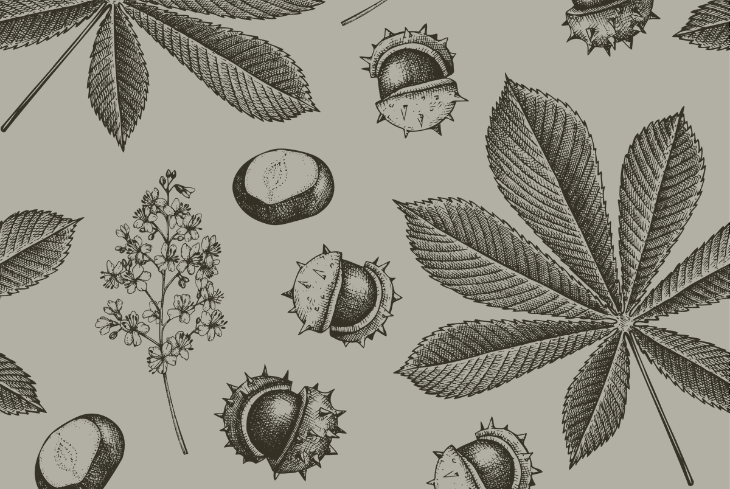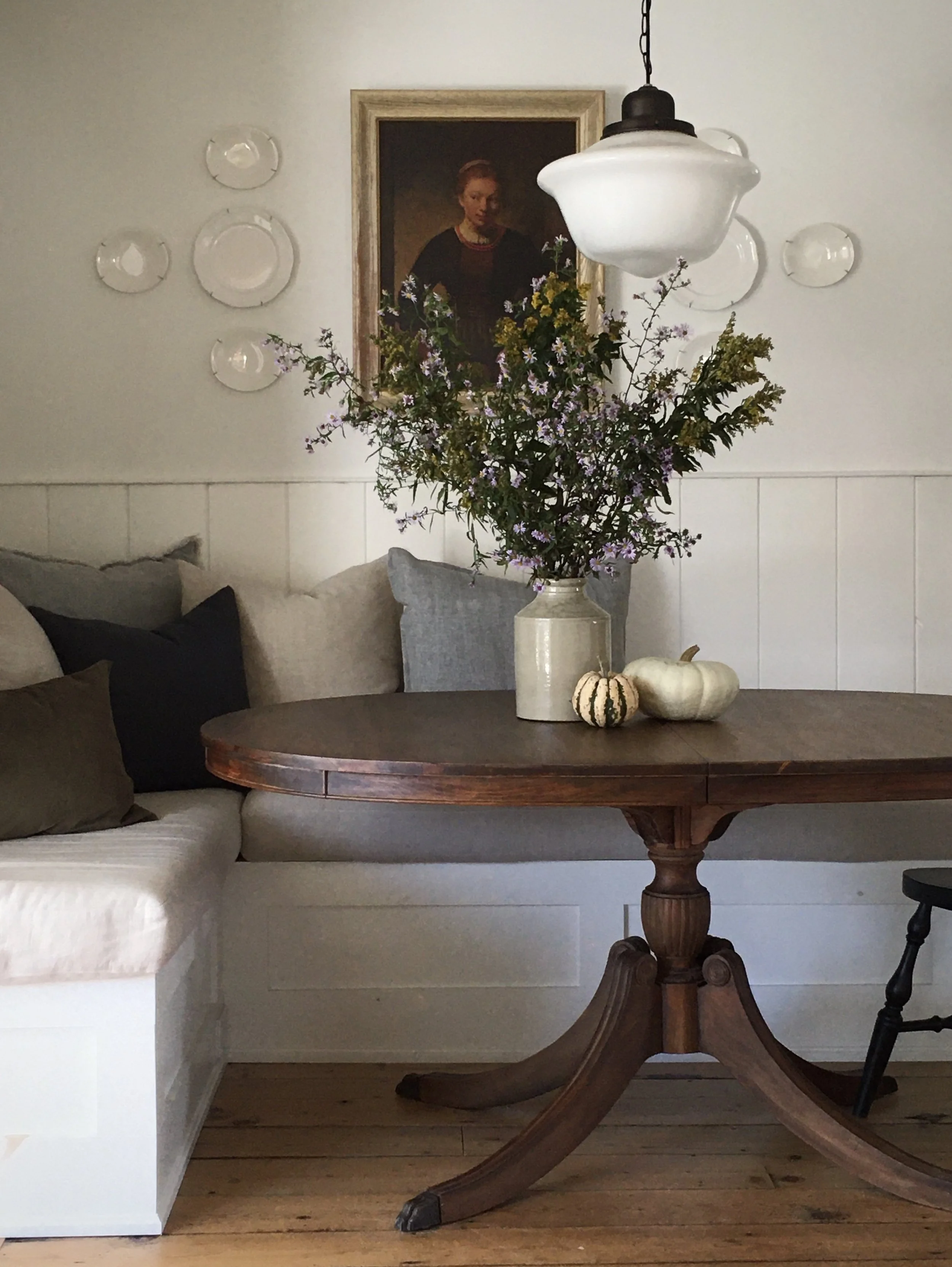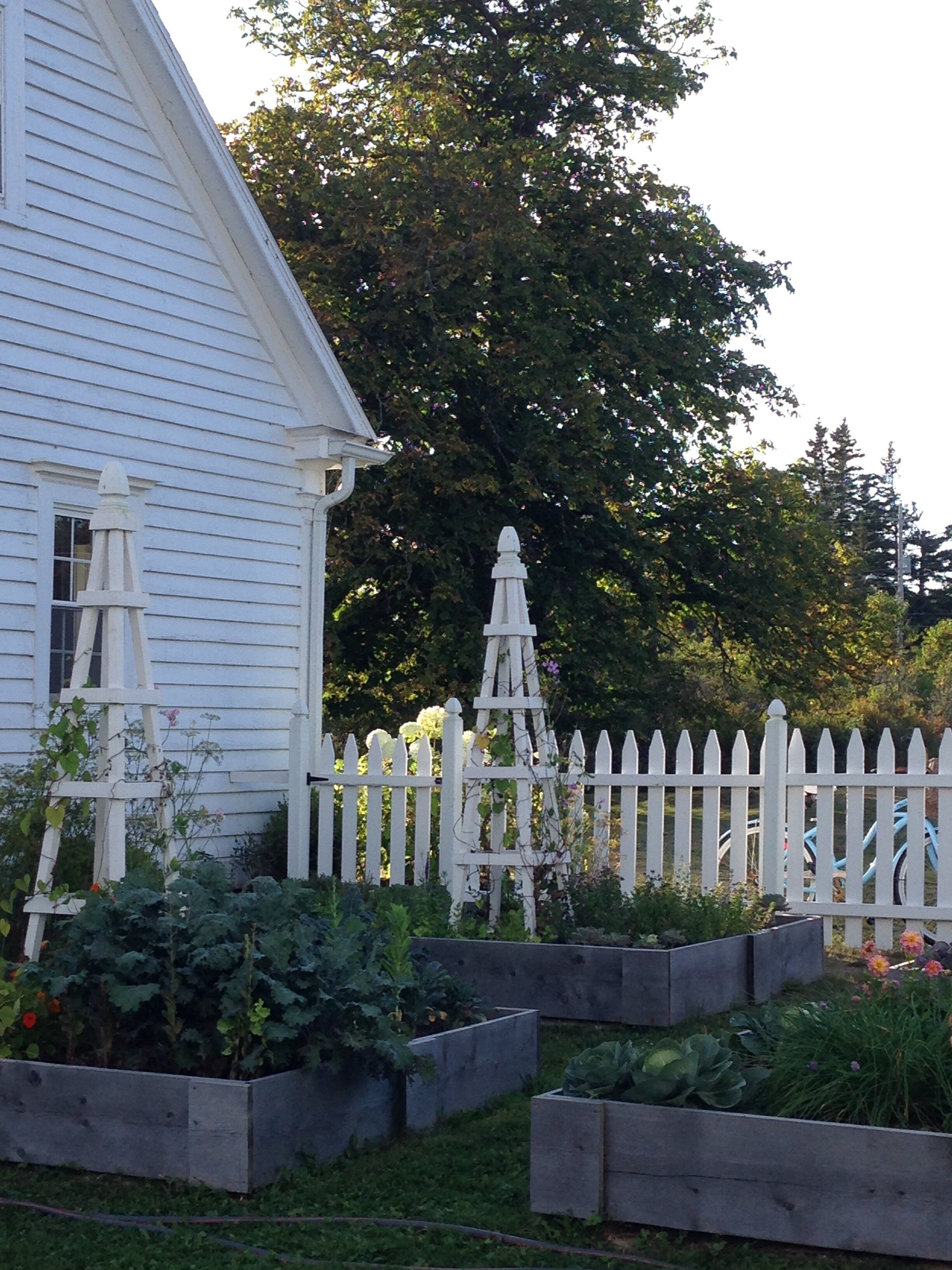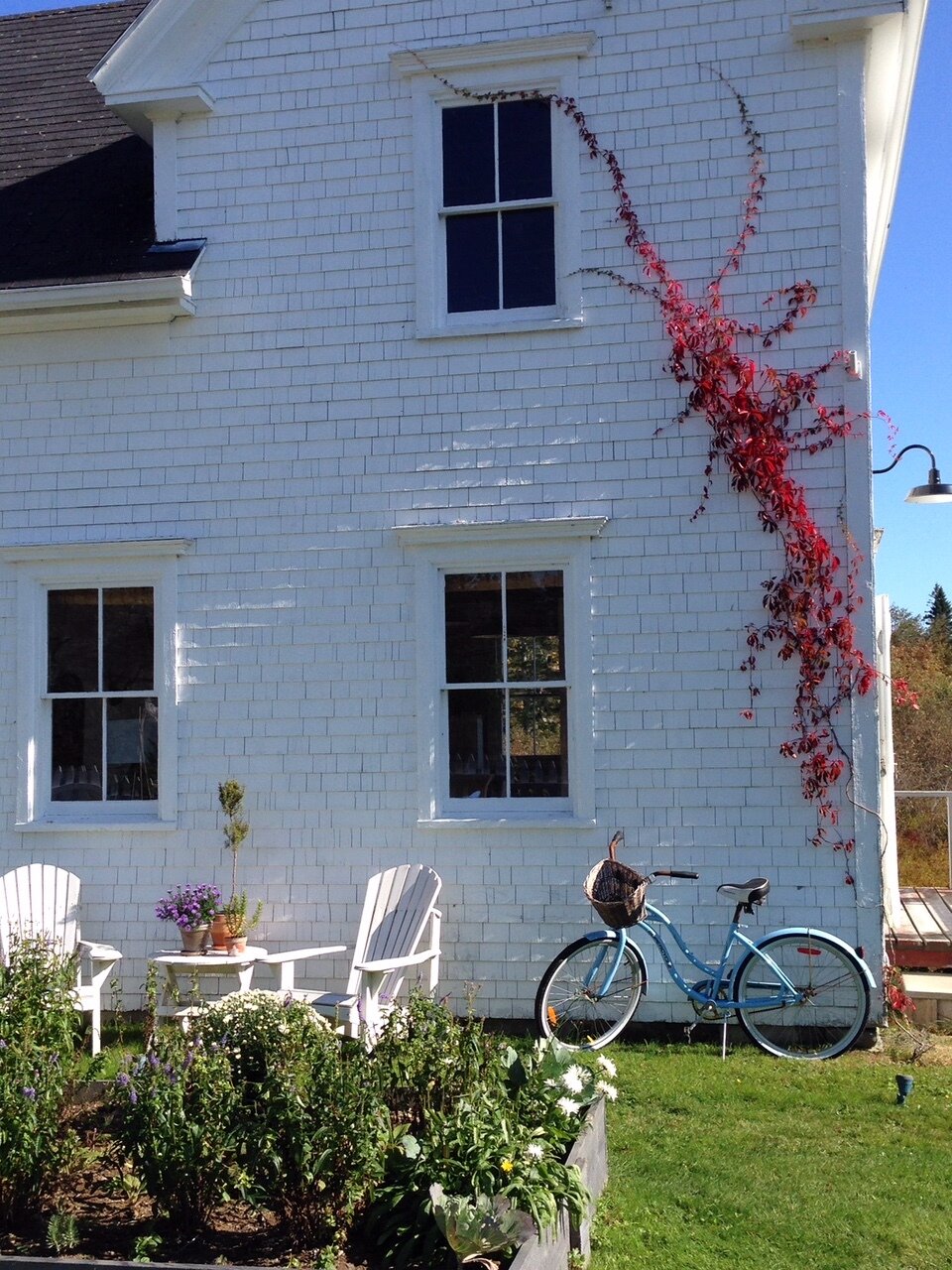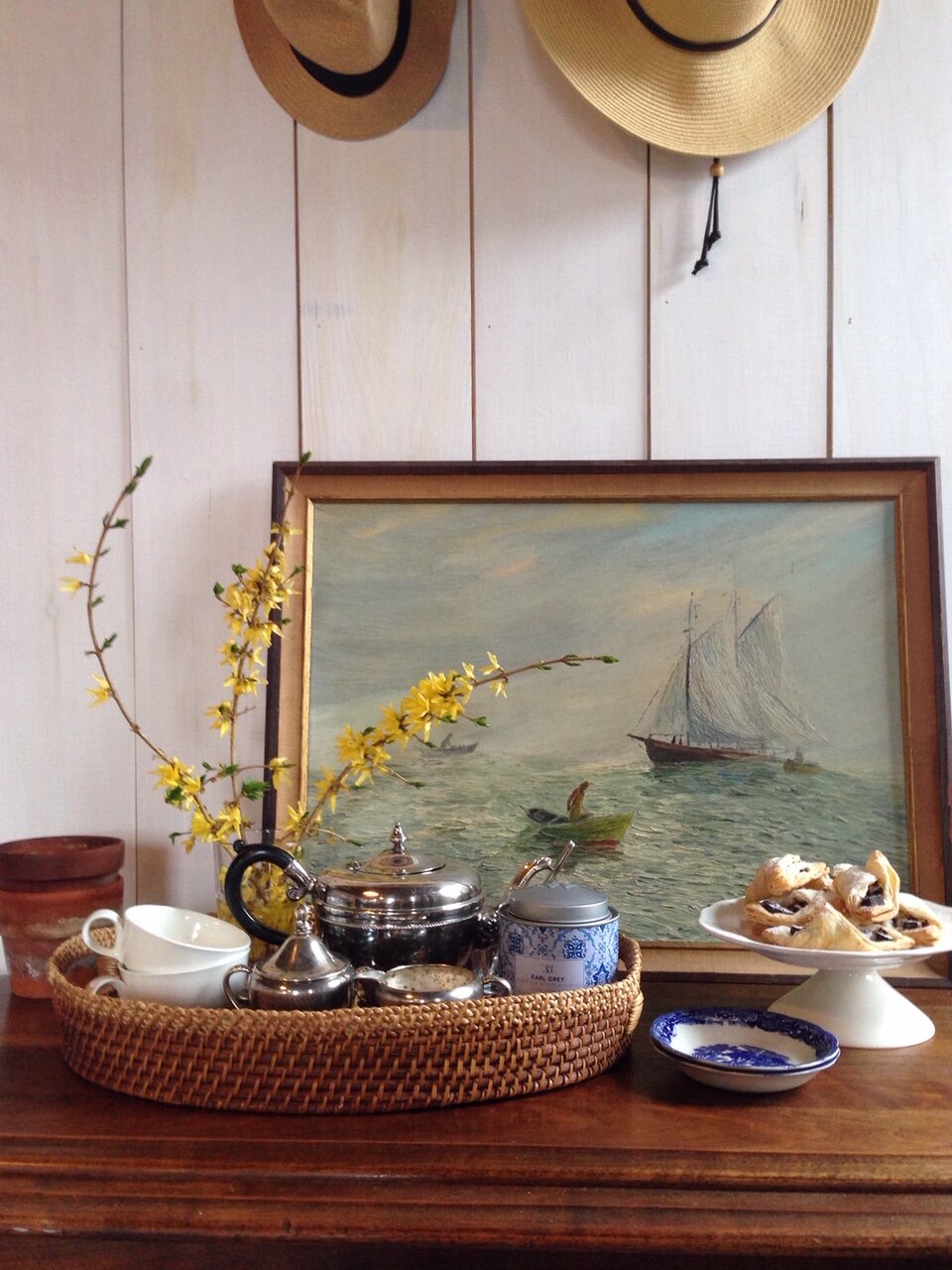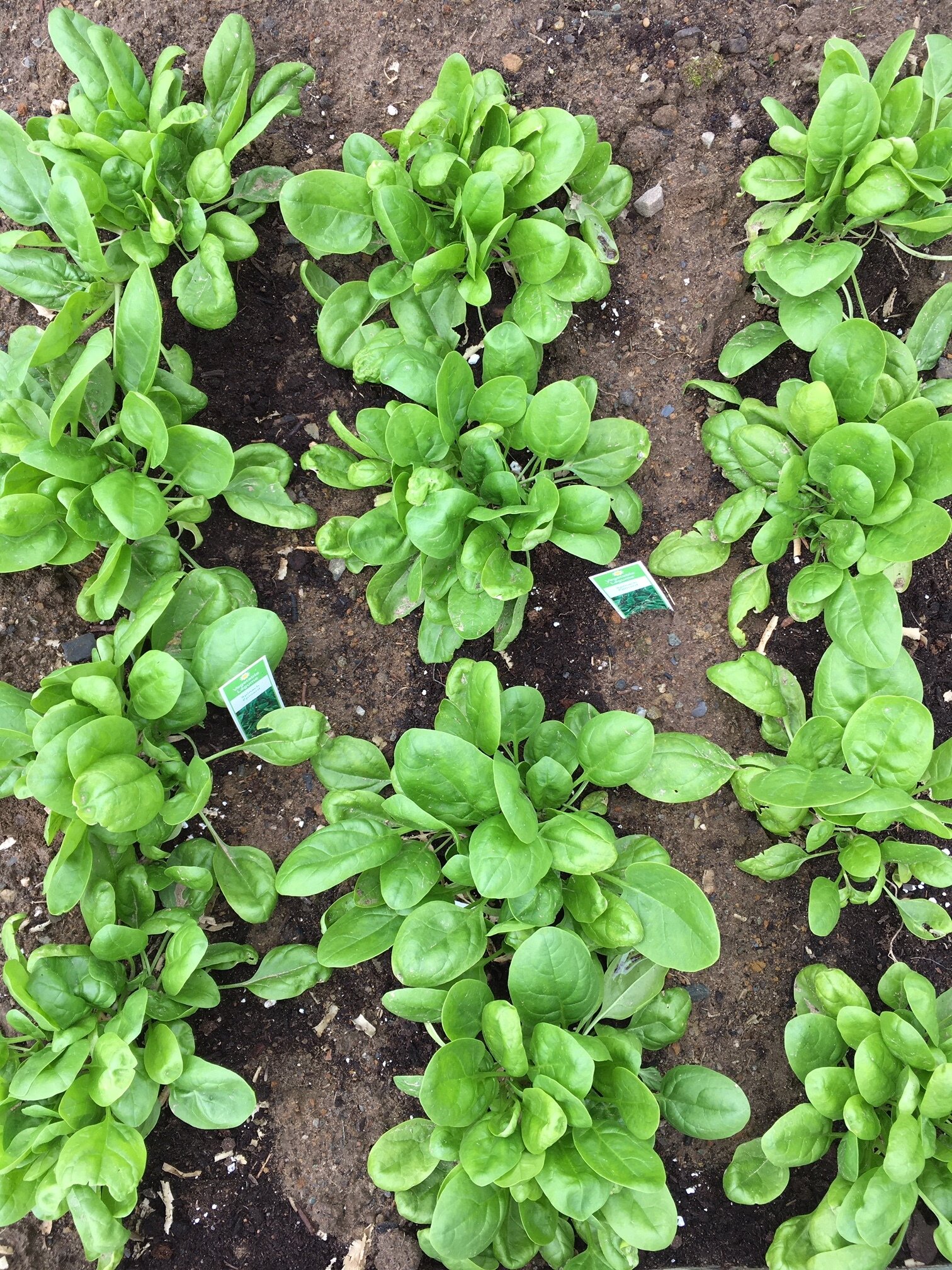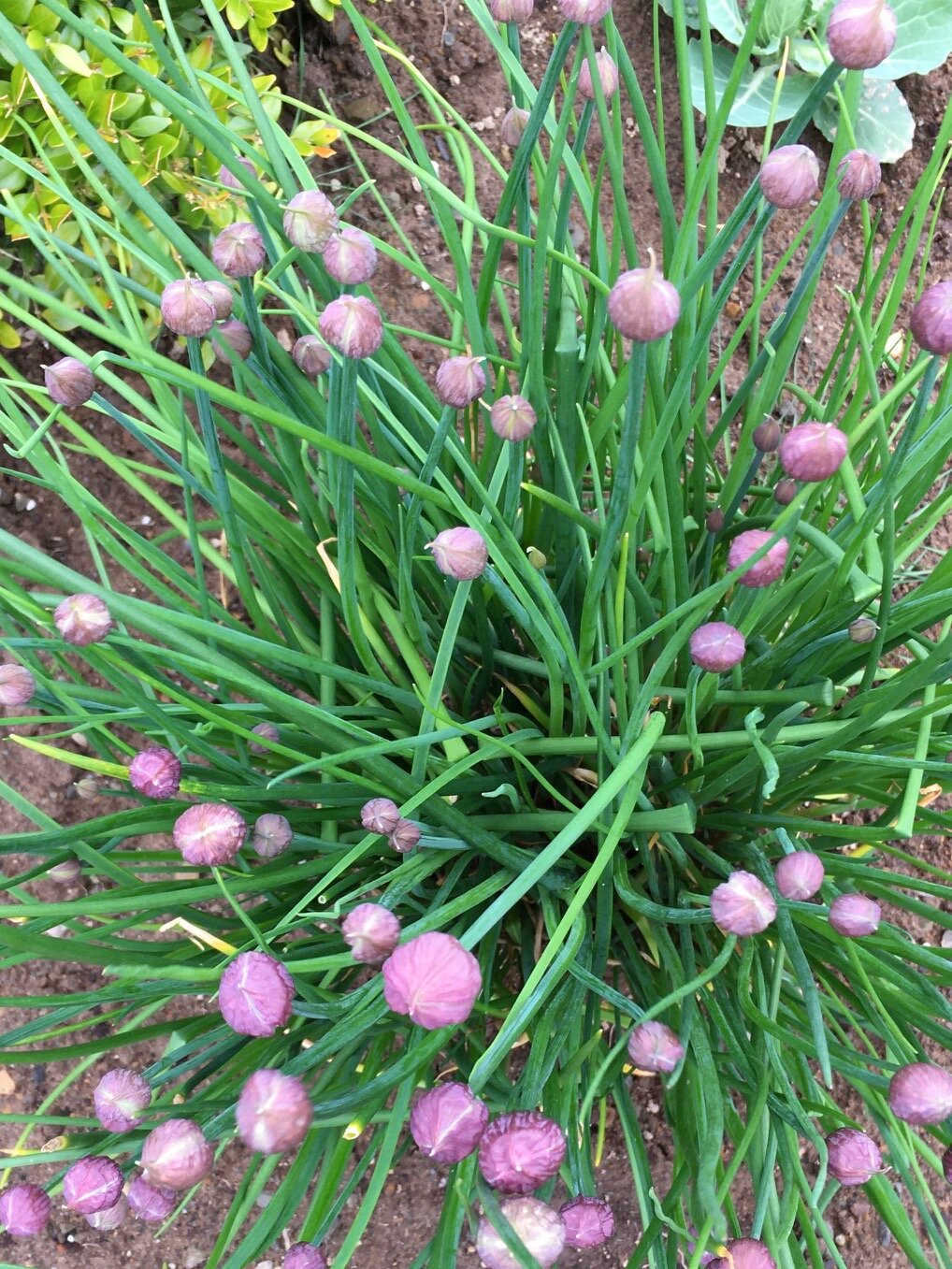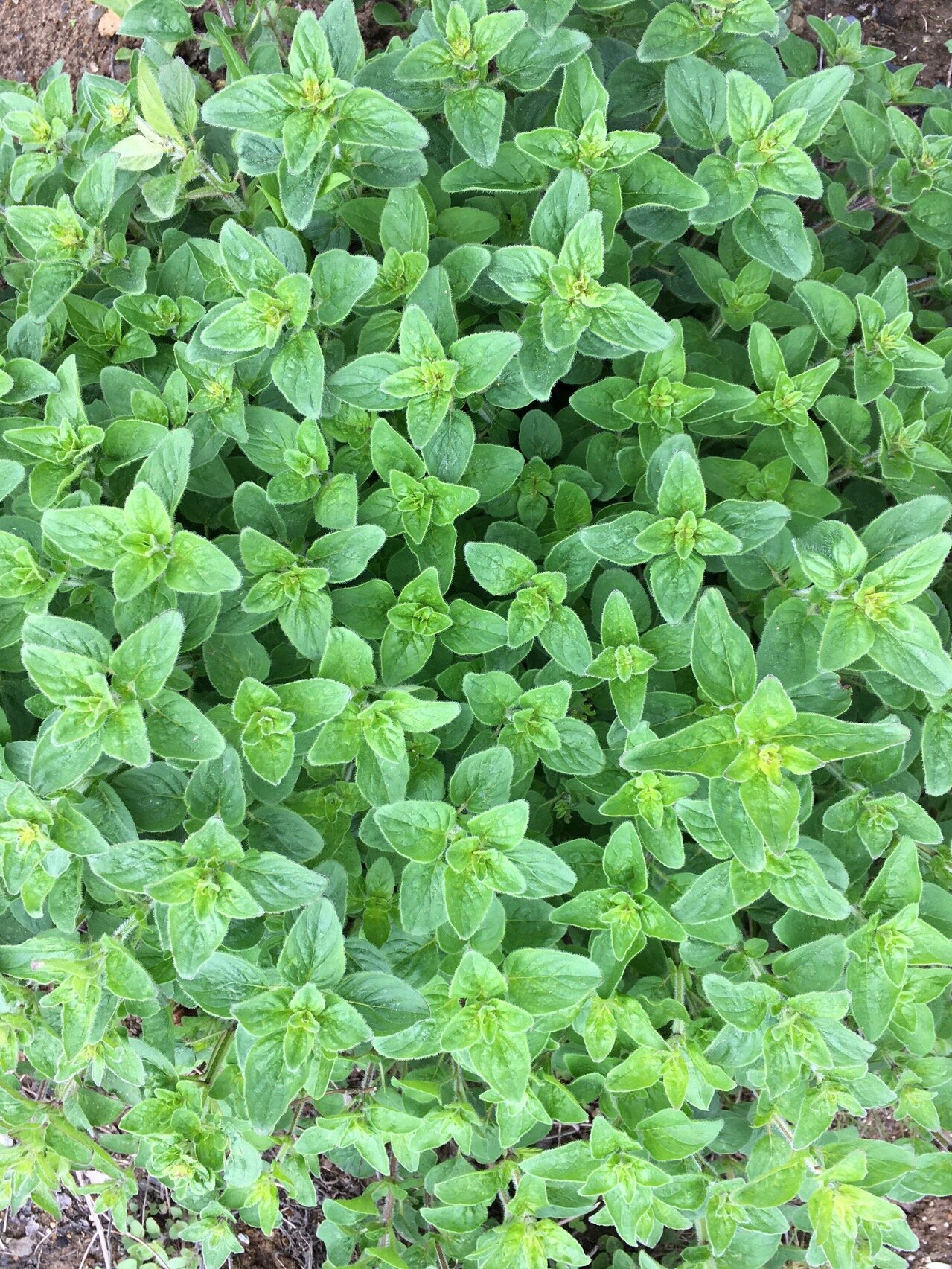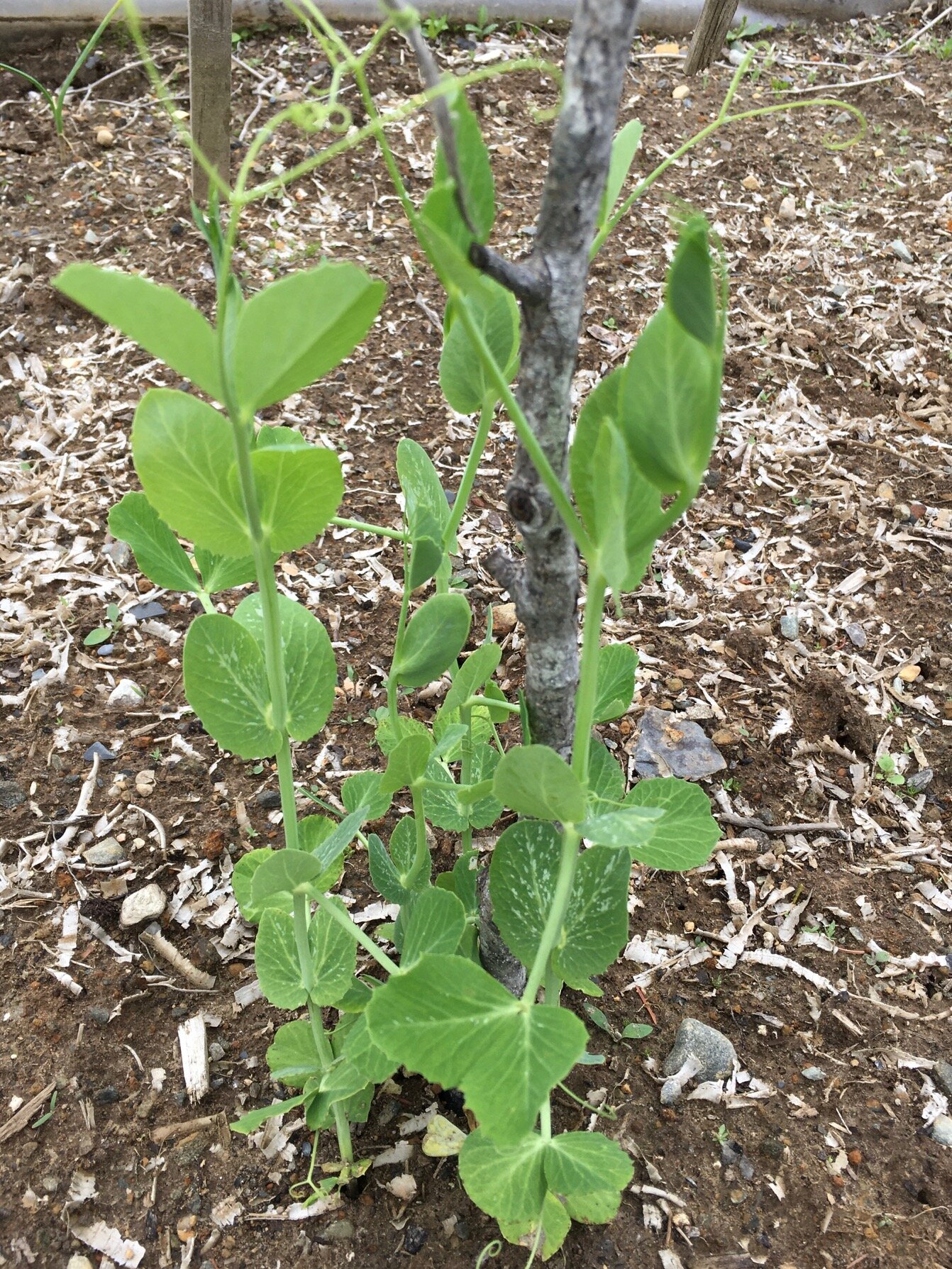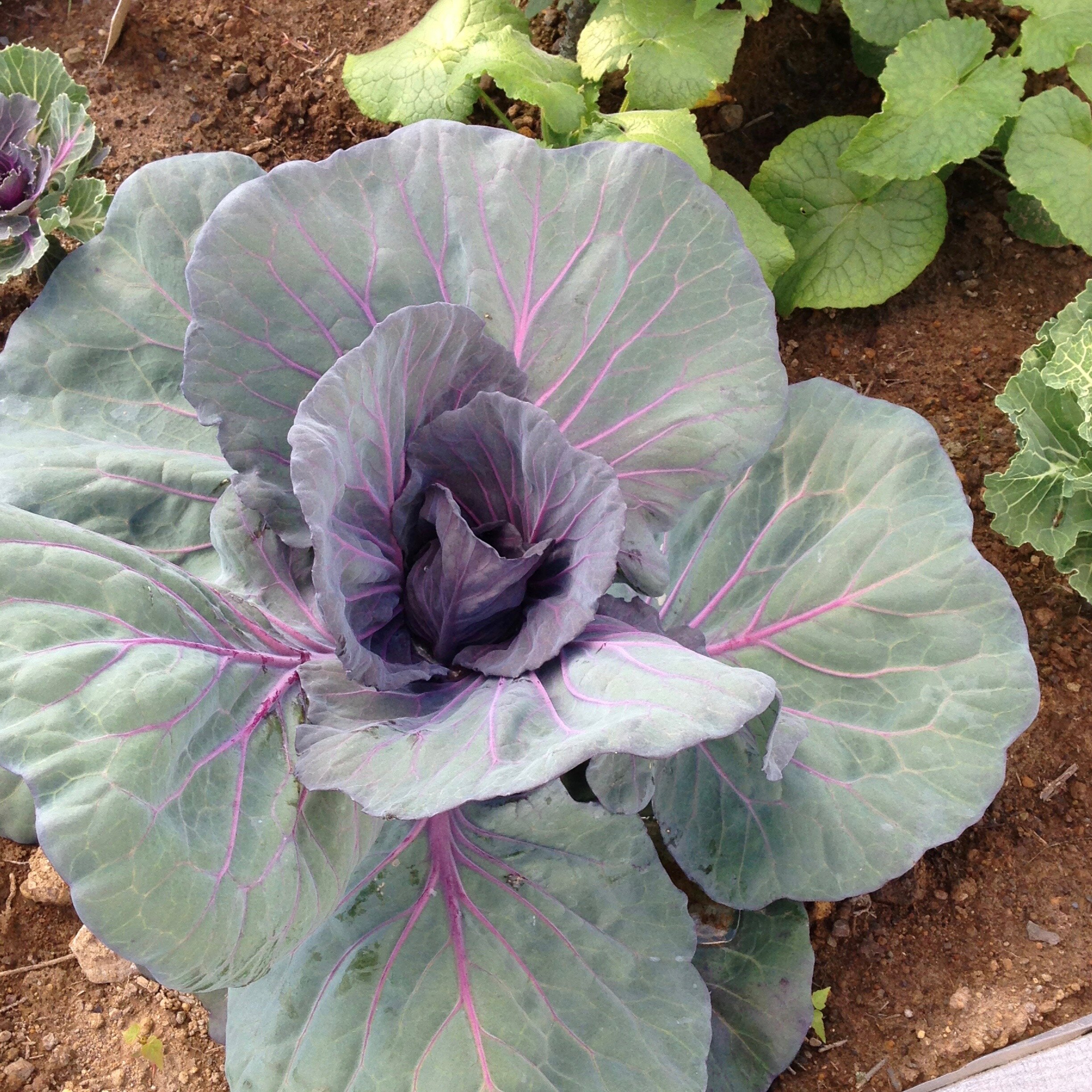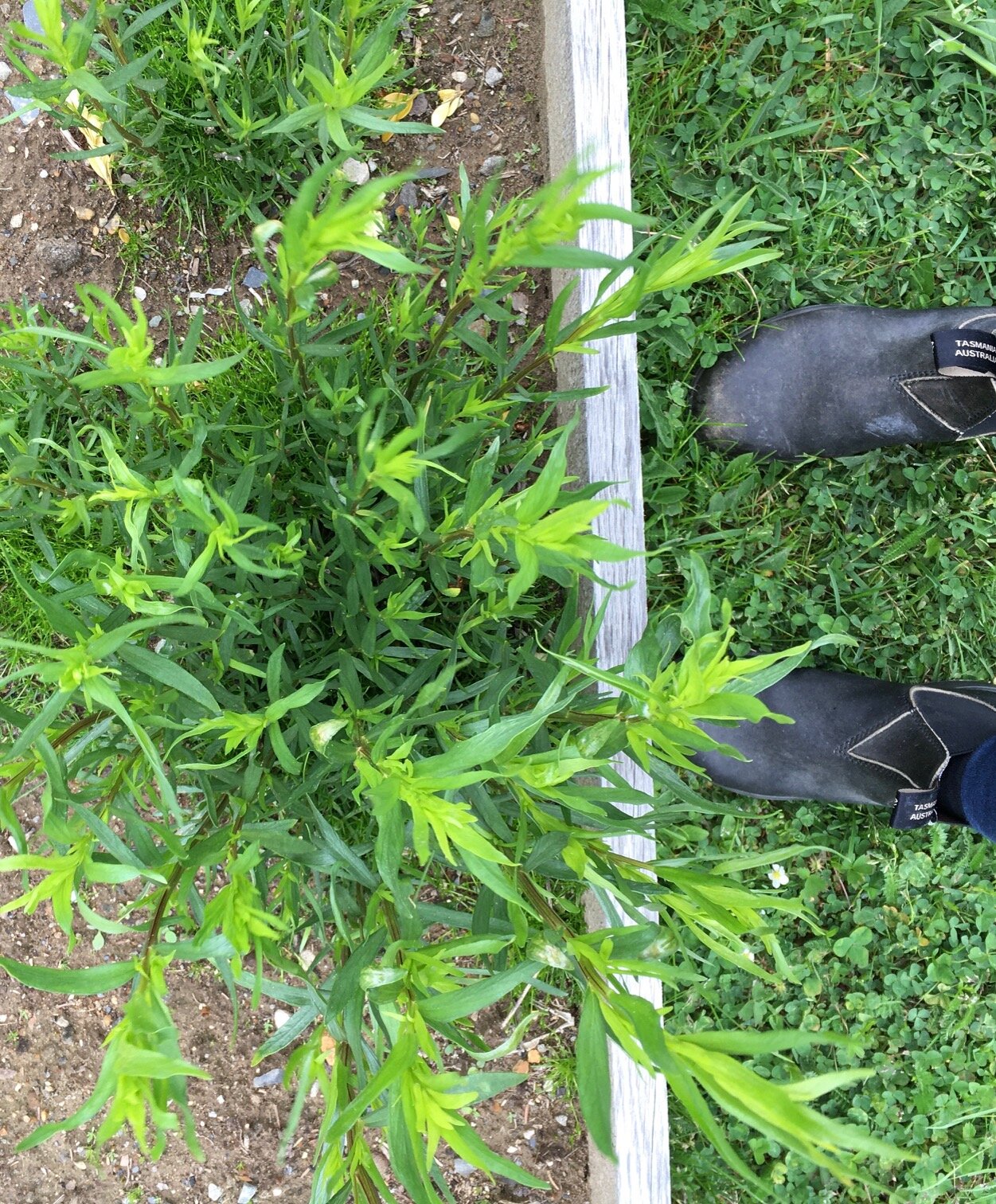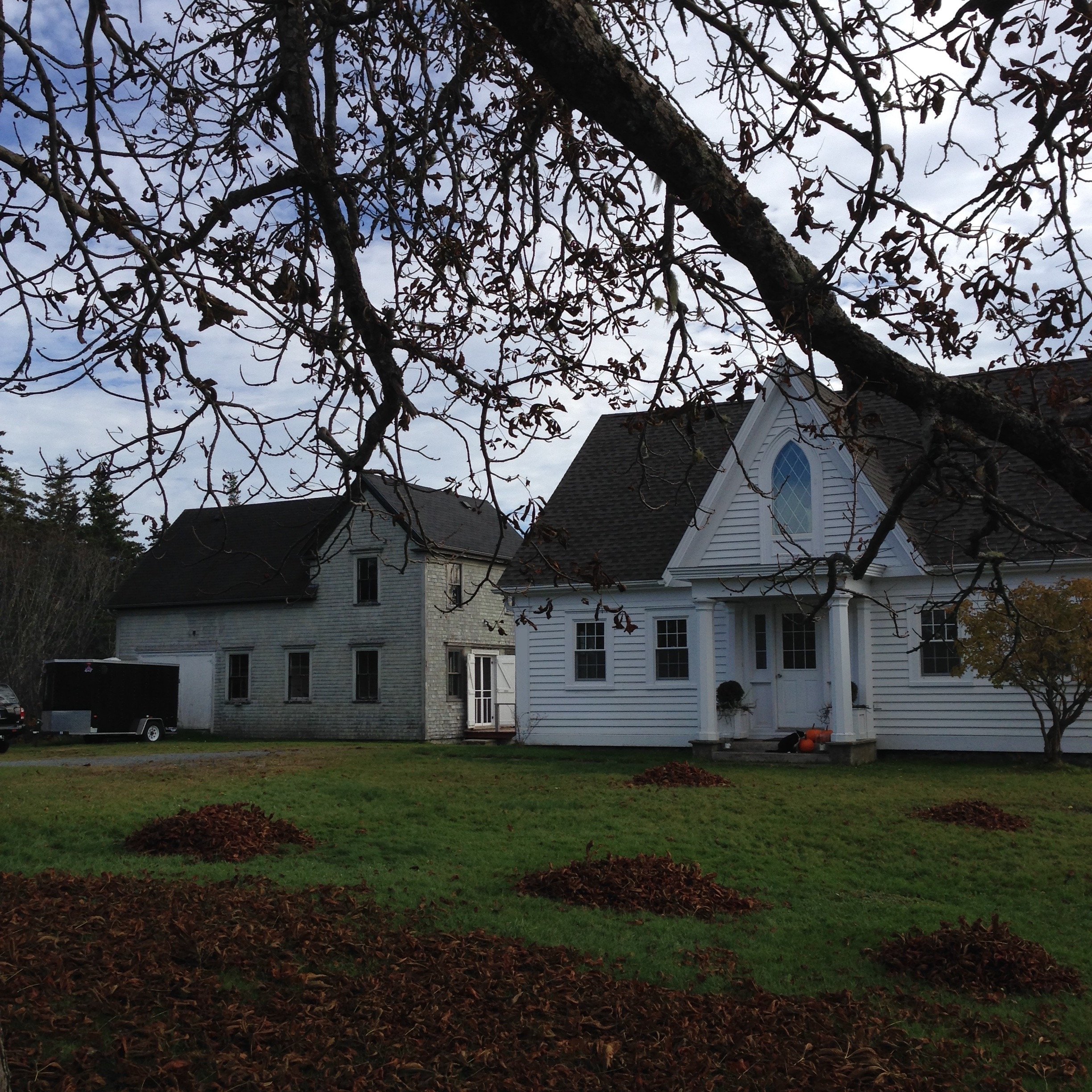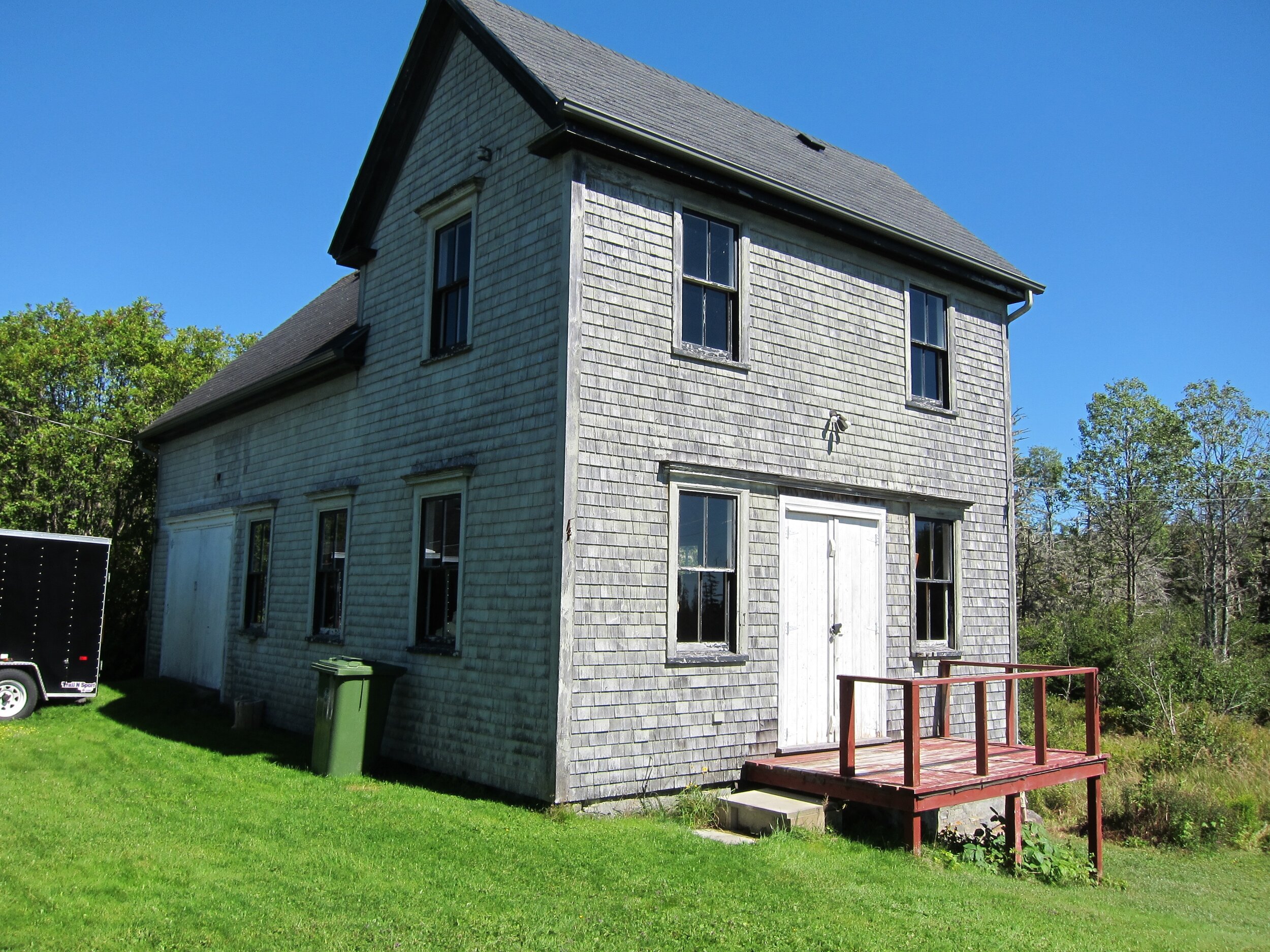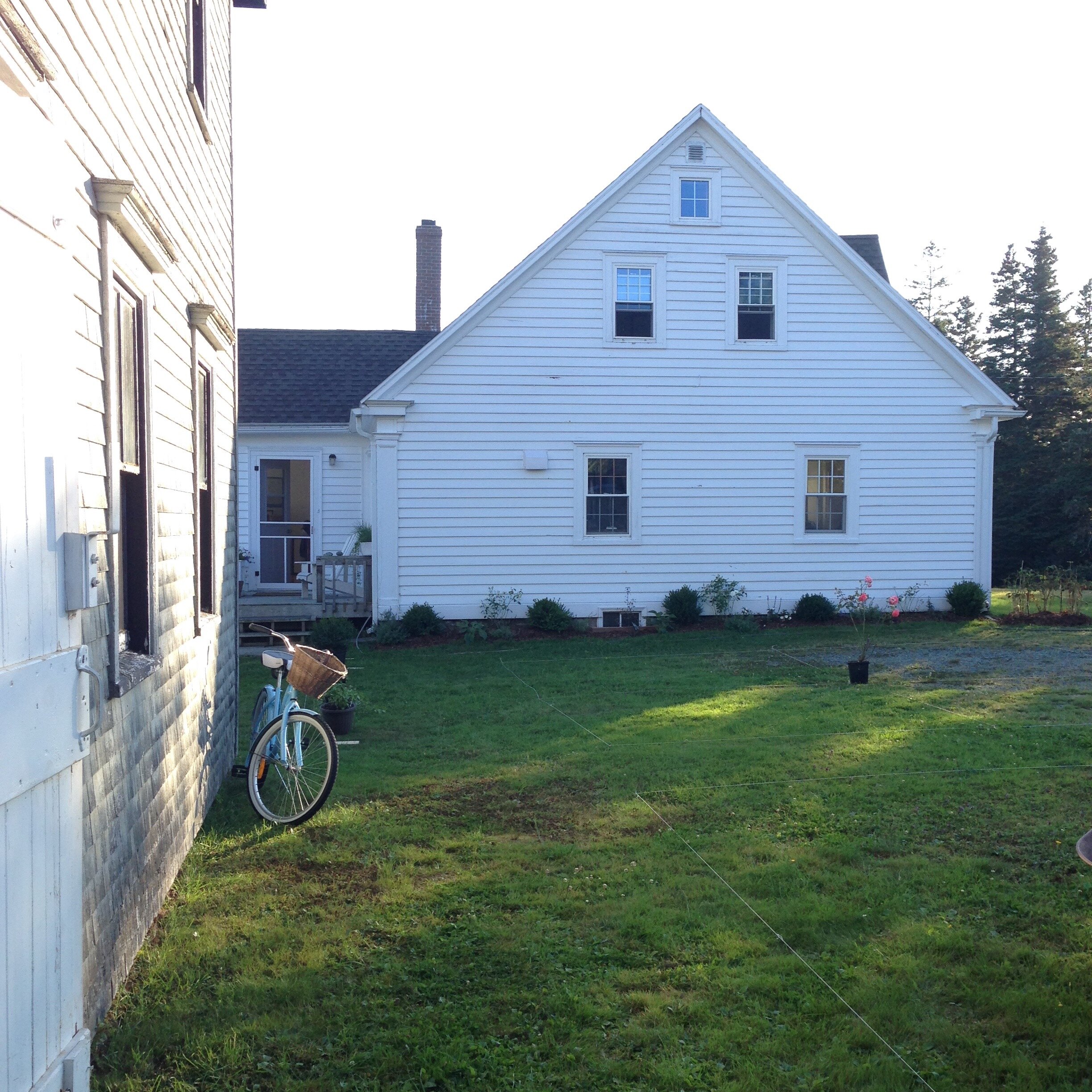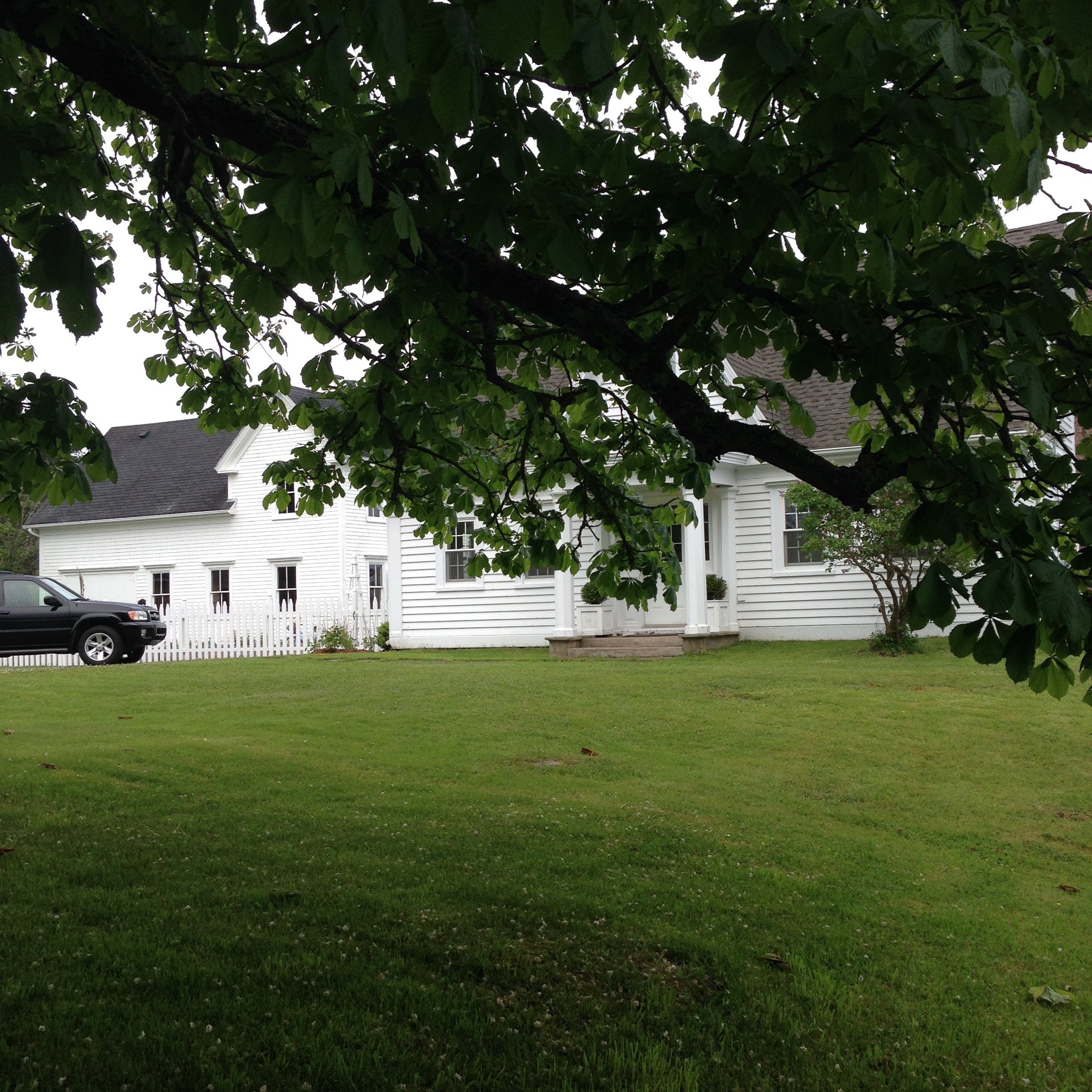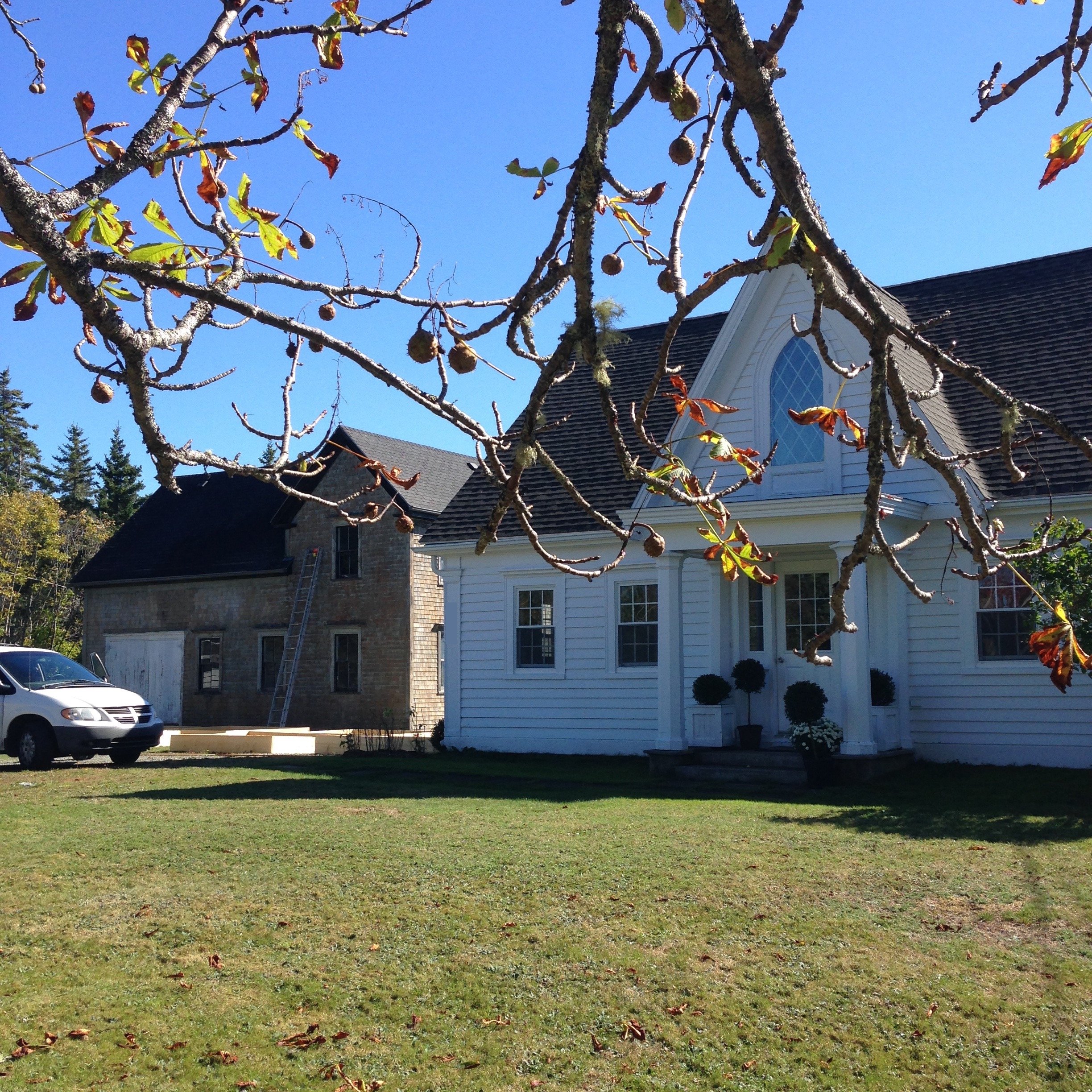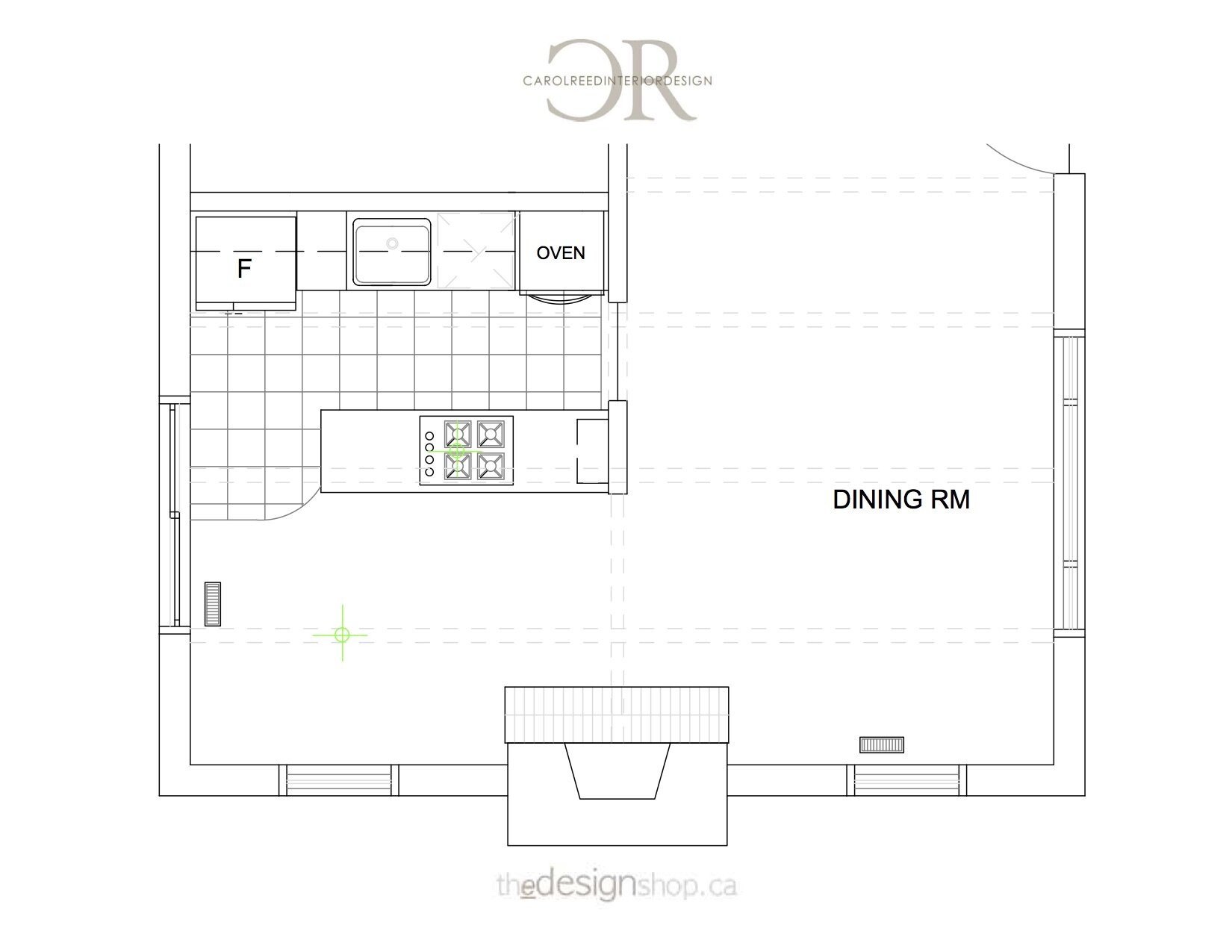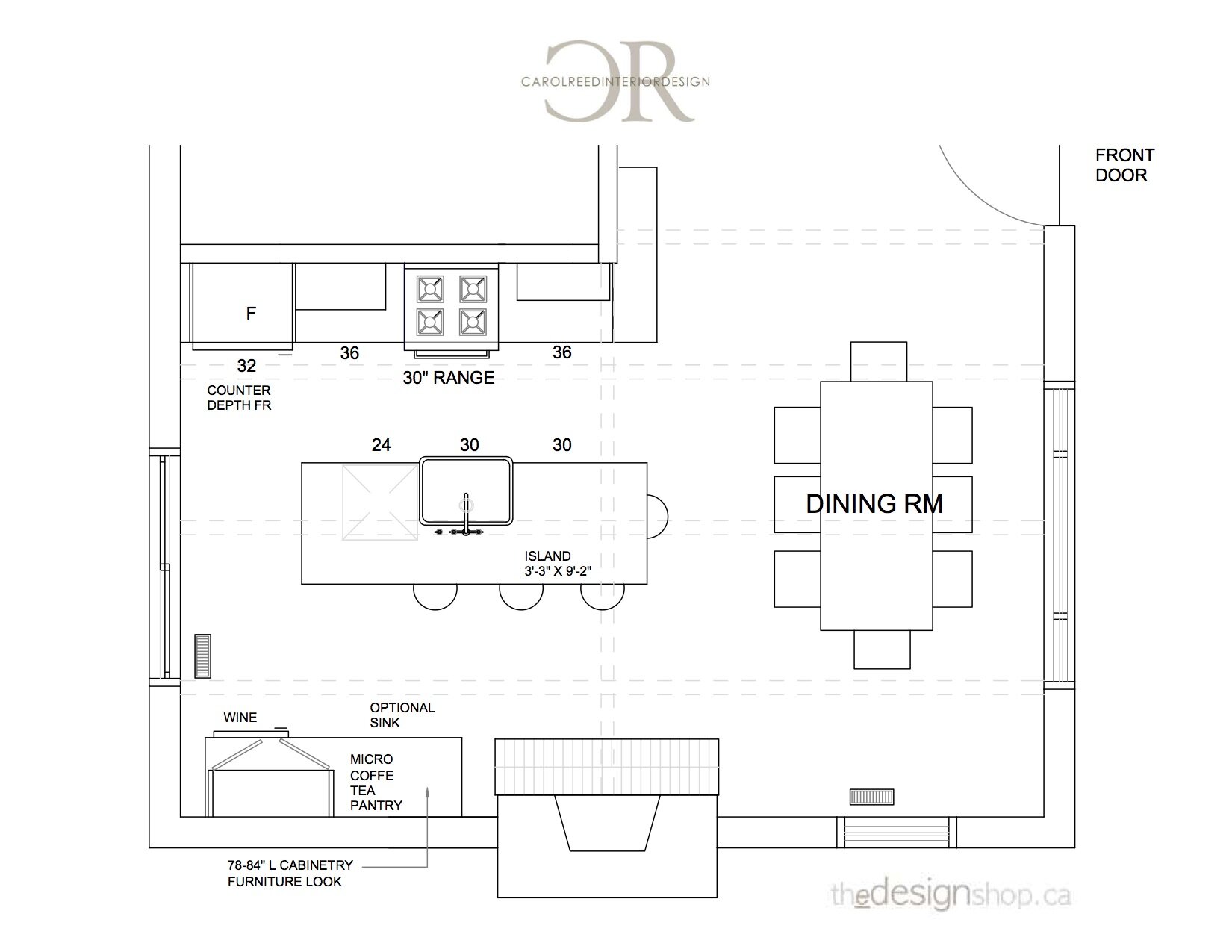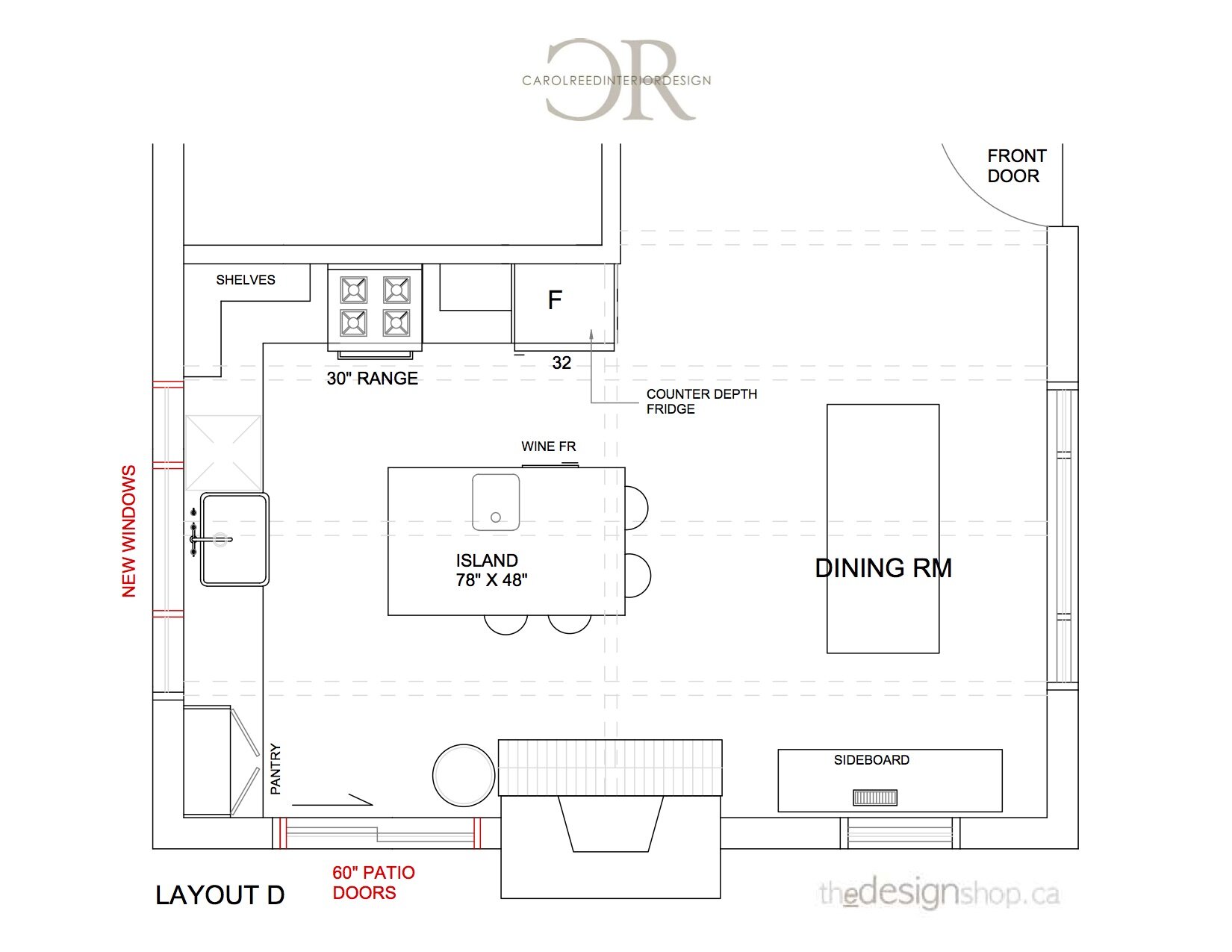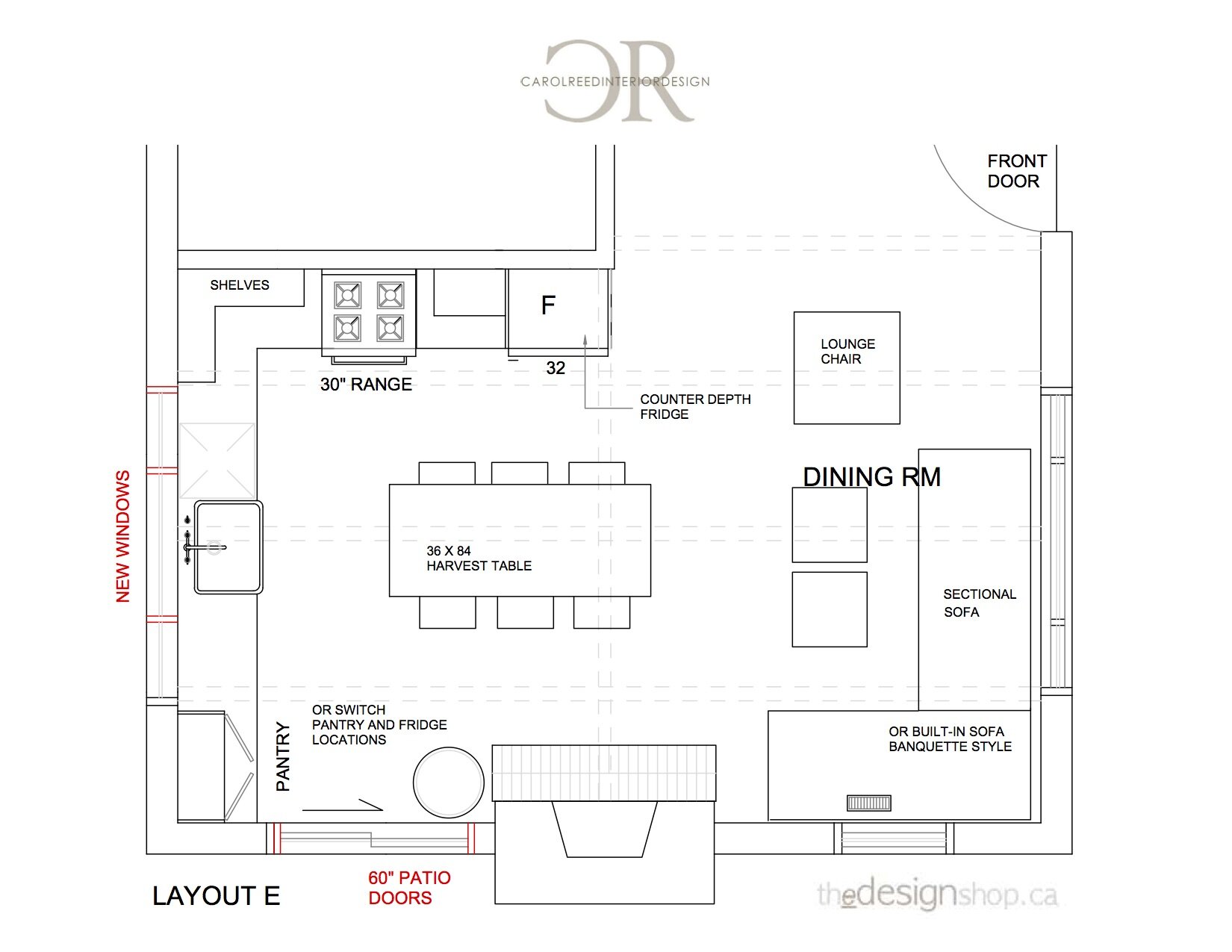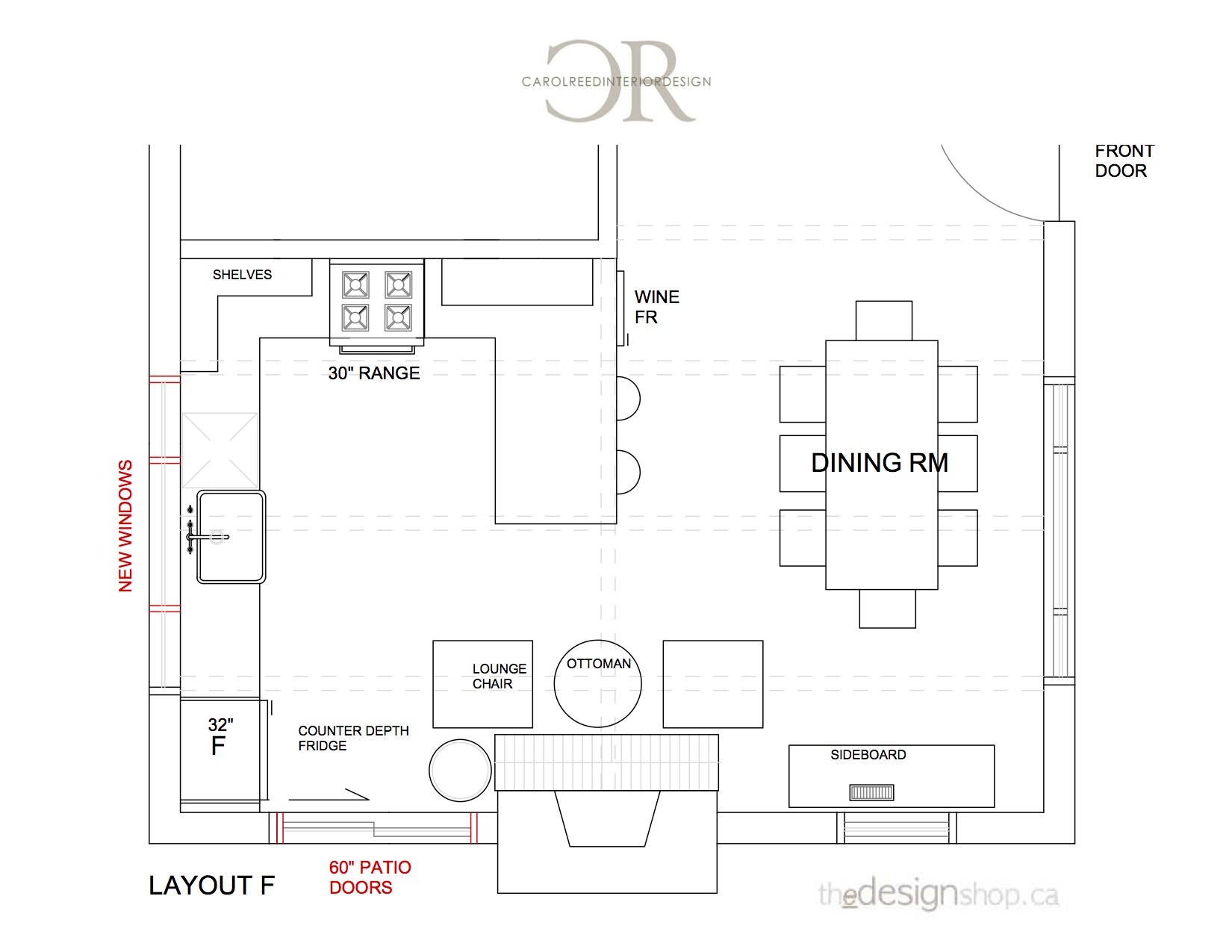After building the raised beds and installing the picket fence the potager garden instantly had a distinct purpose and was a new favourite place to spend time. The barn is an integral part of the garden not only is it the backdrop to the garden but its where we prep all our seeds and keep all our gardening stuff.
The main floor of the barn is divided into two areas, the back area with the big double doors is a workshop area, the opposite end is a lounge/bunkie area, with doors that open up out towards the house and ocean. In the warmer months this lounge area functions as a screen porch and bunkie.
We had little to no experience with gardening before we built these raised beds in 2016 and when it came to figuring out what to plant in them I relied on some basic research and opted to go with the square foot gardening method because it made 2 things super easy for us, it clearly allowed us to see how many plants we needed because the number of plants per square is determined for you, (its easy to overlook how big you plants will be at maturity so the grids allow you to easily visualize that mature size) and you can plant in very neatly organized rows, sections or pattern of your choice. As a spacial designer it was super helpful for me to visualize colour planning the plantings and also for creating symmetry in the 8 beds. I was attempting to create a combined ornamental and vegetable garden (potager) and incorporating perennial shrubs too so planning all this from scratch using a square foot grid simplified and organized the process for me.
During the winter before our first plantings I prepared a planting plan for each bed, you can see a glimpse of in the image above. I allotted categories to each of the 8 beds, 2 herb gardens, 2 lettuce gardens, 2 veg gardens and 2 cutting flowers. Mixed into each would be some annual flowers and perennial shrubs. Initially I started out creating a geometric pattern in each bed, ie; a globe boxwood in the middle, chives in each corner, a border of maigolds etc…Each bed had a different pattern. Adding to the puzzle was that I also had to ensure the plantings were compatible with each other and received the proper amount of sunlight. The best laid plans however can often unravel! After our first trips to the garden centres we quickly realized we weren’t going to be to able to follow our plans so strictly because the selections were limited particularly for certain flowers and certain colours. The plans were incredibly useful to have on hand as we knew exactly what to look for, but we also made it easy to make a lot of substitutions on the fly.
I think this photo above was from the second summer. The original planting plan was modified from what we learned after the first season - basically, nothing that needs hot temperatures and a lot of sun did well in our garden (peppers, rosemary, basil, beans, garlic..…) essentially for season two our plan became to just buy as much of whatever plants we had success with and could find locally and figure out where to put them once we got home.
Early fall in the garden as things were dying off. ….fall has become one of the prettiest times in the garden, I buy loads of potted mums and pumpkins of all sizes to fill in all the bare spots (more pictures of that in the fall). It extends the life of the past-its-peak garden creating a totally autumnal vibe and when all the cabbages and ornamental kale really get to show off.
The original barn was a workshop to a carpenter who also made lobster traps and there used to be a public fishing wharf on the shore behind our property. There were a few old bouys in the barn and we’ve inherited a lot of mariner kitsch from a neighbour who’s a fisherman so the interior style has organically evolved into part fish shack part garden shed. Aside from paint the barn is in its original condition including original windows, for now we’ve simply painted all the interior walls white and the floor a blue/grey and built a new wall to enclose the work shop and also the staircase.
I designed a pair of day beds to fit XL twin mattresses, they function as sofas and extra guest beds during the summer early fall. Used separately as adult twins, pushed together they create a king sized bed. The coffee table was made from reclaimed wood from our house reno and an old beam we found washed up on the beach
In the spring and early summer we keep our transplants inside the barn until the weather’s warmer and we also start some seedlings in the workshop. This pic is from last year shortly after returning from London (with a huge supply of tea!), the long weekend in May was so cold and wet I spent a lot of time in the barn enjoying hot tea and planning out the raised beds. A shiplap wall encloses the staircase to the upper level.
A vintage mariner painting found locally, and an antique cedar chest that was my grandparents, from my childhood bedroom.
I had recently returned from England where I became addicted to cream tea, a tradtional afternoon tea served with scones, clotted cream and jam. I brought loads of tea home with me and so I continued the afternoon habit with whatever pastry or sweets i could find and until all my wonderful tea’s ran out. On this day we had no scones or baked goods in the house so I whipped up these treats in literally a few minutes using thawed frozen puff pastry sheets, some banana slices and chocolate chunks - baked until golden and gooey. Hot tea and baked sweets in the barn made a rainy long weekend not so bad.
This year will be our fourth season planting the beds and we now rely on some tried and true, no fail favourites. These are the plants that pop up in early spring even if there’s snow or frost, or are still thriving long past thanksgiving - they are maintenance free, and produce such great tasting food that they’re total winners for us in a very challenging environment.
MY POTAGER GARDEN FAVOURITES:
THESE SIX NO-FAIL PLANTS WILL LOOK BOUNTIFUL, TASTE DELICIOUS AND THRIVE IN EARLY SEASON COOL TEMPS
We have cold wet springs here on the coast and being right on the shore our garden is exposed to lots of fog, salt mist, rain, and high winds but none of that seems to have any negative effect on these plants. What I love even more about these is that they’ll fill your garden with fresh green and purple during those times of the year when your garden might look pretty bare.
The spinach transplant likes the cold, and grows fast, we’ve been eating baby spinach salads almost daily (in June), which is a treat when not much else in your garden is growing yet, except chives! Chives are champs! We planted these perennials the first year, even in snow they’re bursting out of the ground in this beautiful spray of vibrant green and by early June the purple flowers are out.. Oregano is another perennial, they spread a lot and have grown into this beautiful tall mass of herby green leaves. Since we can’t grown basil, we use oregano they way we would normally use basil - in everything. The sugar snap peas were the sweetest surprise, we planted these for the first time last year and to our surprise these sprouted out of the ground this year along with the chives. Some fallen seeds from last year just germinated on their own and now there’s a entire crop of them growing like crazy, they are hands down one of the most delicious things we grow, and beautiful climbers. Cabbages are my go to. I plant dozens of these, purple and white. They’re gorgeous, huge, and add so much texture and colour to the garden right through to end of October. They store well, and we love cooking with cabbage so its win win win. Terragon,,,not my favourite herb to eat but I love the plant because it reminds me of rosemary (which we can’t grow) its a perennial that just keeps coming back bigger and bigger each year. It pops up in very early spring and like the chives, its a welcome burst of green in the garden when nothing else has been planted yet.
Arm loads of chives, the first of three harvests. We cut them down to a few inches of the soil three times a season, they grow right back to full height in less than 2 weeks. A never ending supply (more than we can possibly eat), we put chives on everything now.
I love this plant as much for the flowers it produces.
If you’re not yet growing any veg or herbs at home I highly recommend starting some, nothing tastes better than growing your own, and they look beautiful too!. As newbie gardeners we get overly excited at the smallest successes because we’ve had so many failures but we keep on experimenting and discovering new things that work and what doesn’t, I hope our list of easy to grow plants grows longer every year.
